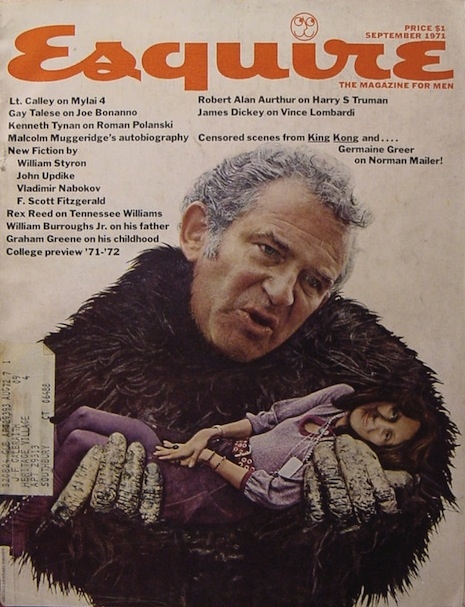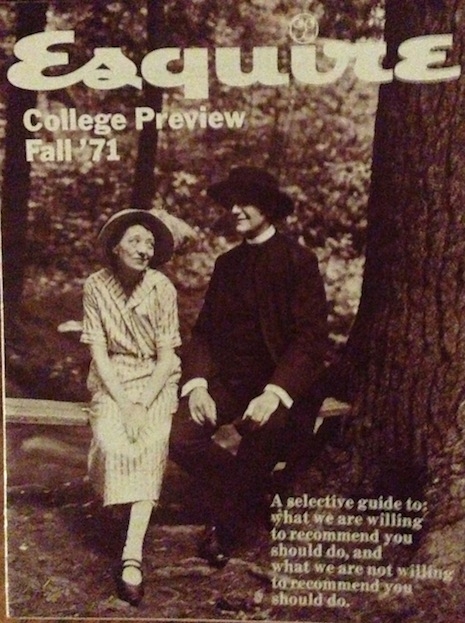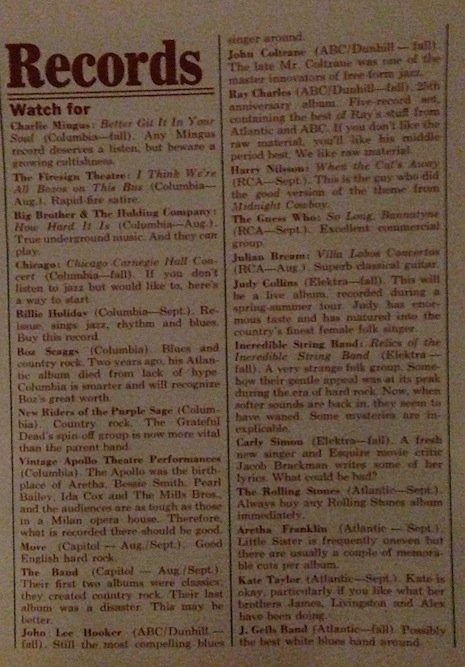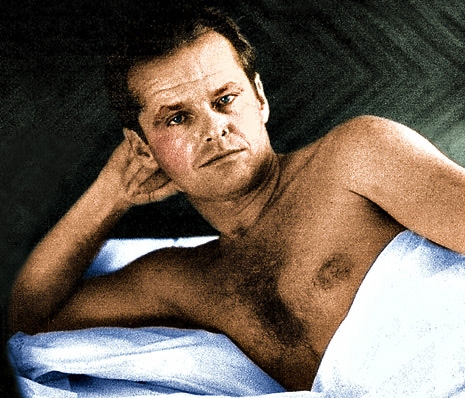
This is one of those weird episodes that you’d think you would hear more about….. I can hardly find anything about this on the Google machine. As a result I suspect I’m missing some key points of information.
Let’s start with George Lois. Graphic design students and professionals alike revere the work that George Lois did as art director for Esquire between 1962 and 1972. It’s easy to see why: Lois supplied incredible conceptual oomph and rigor in a forum that was not only culturally relevant; it was culturally sizzling. His covers of Muhammad Ali as St. Sebastian, Andy Warhol drowning in a can of Campbell’s Tomato Soup, Richard Nixon having makeup applied to his face, Roy Cohn as a cynical angel, Ed Sullivan wearing a Beatles moptop wig—all of these are just a handful of examples of Lois defining the very pinnacle of magazine cover design. As a result, for those years Esquire’s hefty cultural relevance index combined the fun of Playboy and the intellectual heft of, say, Harper’s. There are plenty of big-ass coffee table books celebrating Lois.
As Wikipedia indicates with its usual dry understatement, “Lois has been accused several times of taking credit for others’ ideas and for exaggerating his participation.” To read his book Covering the ‘60s: George Lois, the Esquire Era is simultaneously to gape at the sheer visual genius behind the covers and to cringe at the sheer magnitude of the the ego on display (in his accounts of how the covers came to be). Often his stories have more than a whiff of a self-aggrandizing tall tale that is short on a few key details. If you click on the links in the last paragraph, you can read some of his ego-fueled prose for yourself—really, he seems like a spirit animal for Robert Evans.
So by 1972, Esquire had spent several years being one of the most talked-about magazines in America. Landing a Lois cover wasn’t just a good placement, it was the most happening place you could be. So in 1972, after Easy Rider, Five Easy Pieces, Carnal Knowledge, and Drive, He Said in rapid succession, it was becoming increasingly clear that Jack Nicholson had become an actor to seriously reckon with. So when Lois asked if Nicholson would agree to appear naked on the cover of Esquire, it’s not so strange that Nicholson said yes with alacrity.
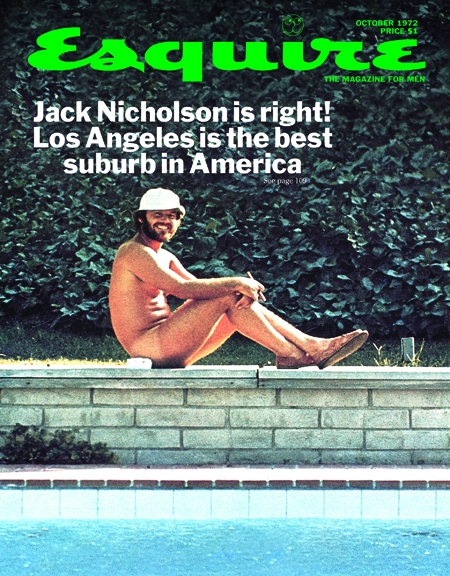
The crazy thing about Lois’ account of the October 1972 cover with a naked Jack Nicholson on it is that he never quite says out loud that the cover never made it to press. There’s an allegation of Nicholson’s agent shitcanning the cover and a tale of a power play in which Esquire editor Harold Hayes and Lois were forced out, but while we’re reading that, our eyes are taking in the visual evidence of a perfectly finished October 1972 Esquire cover with a naked Jack Nicholson on it. But in fact, it never ran. Here, read for yourself:
The manuscript was all about the high jinks of L.A.‘s Hollywood community. So photographer Timothy Galfas and I convinced the biggest movie star of them all to be photographed, bareass. Since the story related how hotdogging Jack Nicholson had greeted the writer wearing nothing but sandals, a hat, and a cigar [!], convincing the irascible rogue to post in the buff was a cinch. He loved my covers and wanted to support what he called “the best magazine ever.” Esquire’s ad boys, of course, once again thought “Lois has gone too far.” But this time, even as the covers were roaring off the high-speed printers, management shouted: “Stop the presses!” Nicholson hadn’t told his agent he had agreed to pose, and the concerned agent was threatening to sue the magazine. In 1972, nudity was no joke. Well, when Harold Hayes called to say the owners had killed the cover, in effect cowtowing to the oncoming power of the celebrity and their business agents, I knew it signaled the end of an illustrious road for Hayes at Esquire.
It goes on in that vein for a little more. I love Lois’ characterizations of what other people think of him, Nicholson “loved my covers” while the “ad boys” think “Lois has gone too far,” etc. Hell, maybe it’s all the gospel truth. (Personally, I don’t really buy this story of the agent being the heavy here, that’s the role of the agent, to take on the client’s worst aspects, to represent his or her self-interest. It’s entirely possible that Nicholson changed his mind….) I also adore his dated gossip columnist’s patter, “high jinks,” “irascible rogue,” “in the buff,” “cowtowing,” etc.
Fortunately it doesn’t take but a minute to find out what Esquire actually had on its cover for October of 1972, and in fact, the cover that ran was almost as interesting—a picture of a young and un-mustachio’d Burt Reynolds, naked from the chest up, peering down at his nether regions in a dismayed fashion next to the words “The Impotence Boom.”

The odd thing is that this shitcanned cover seems to have had virtually no echo. If you Google, in various combinations, the terms “Jack Nicholson,” “George Lois,” “Esquire cover,” and “October 1972,” there isn’t that much out there to find. Apparently nobody’s that interested that Nicholson came that close (hold thumb and index finger a little apart) to appearing naked on the cover of Esquire.






